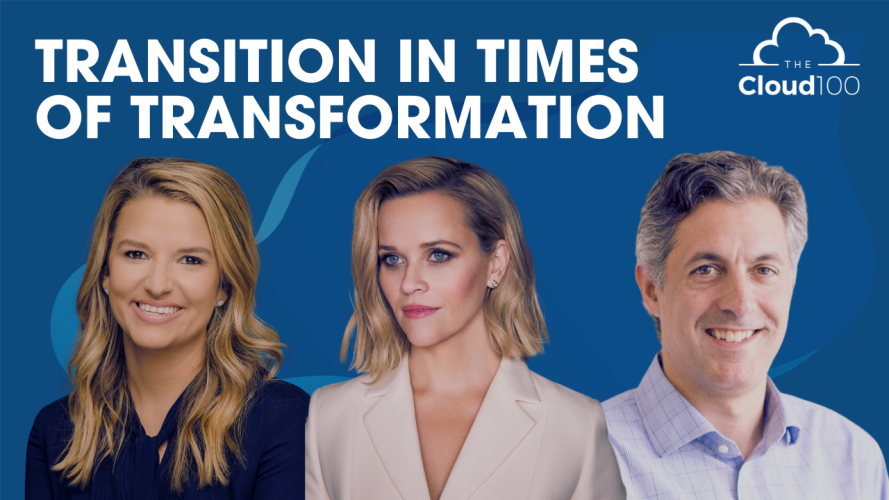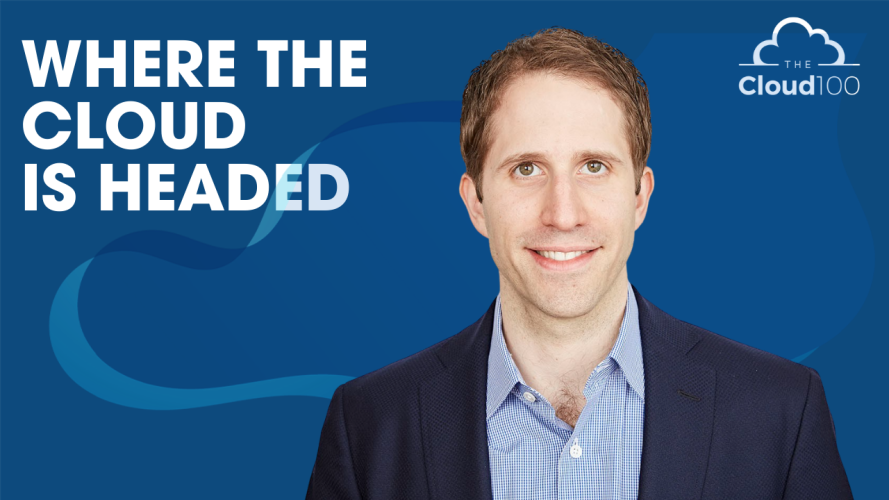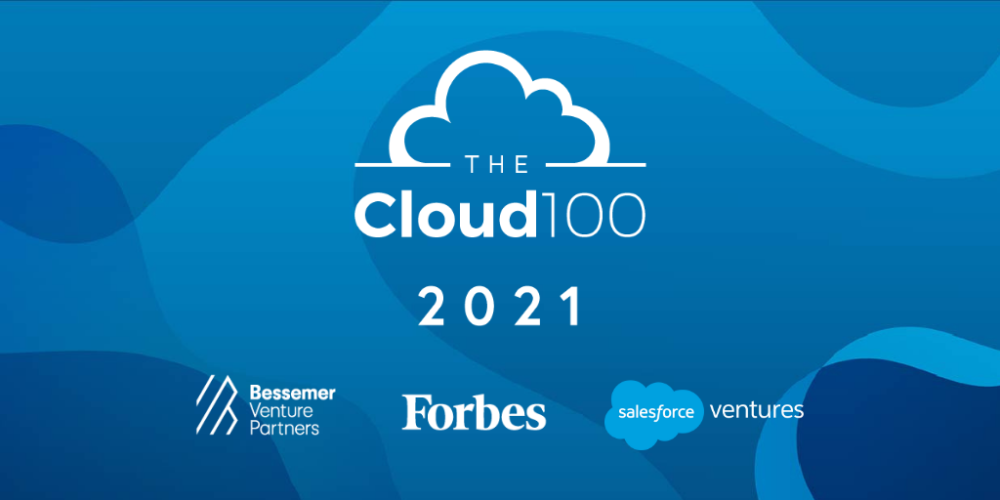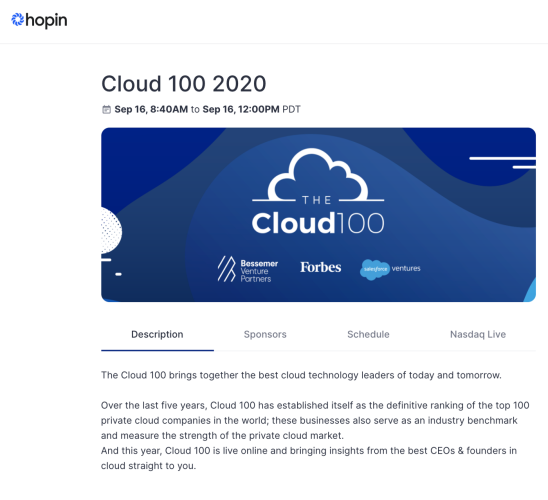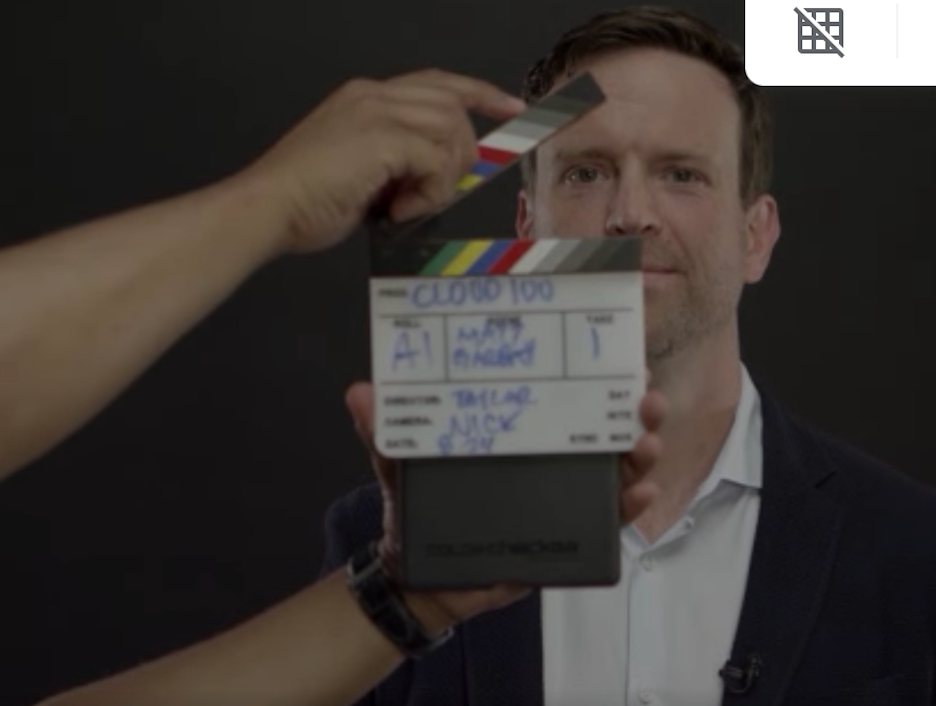Cloud 100
Transformation in Times of Transition
The pandemic isn’t over, but the light is at the end of the tunnel. During this great reset — when the way people work and live is more fluid than ever before — figuring out how to navigate the digital and the “real” world seems to be on everyone’s mind. For many leaders, this shift is an opportunity to explore what they can do differently as the world begins to open up again.
To help explore this transition, we bring together three leaders from industries undergoing major change who are leaning into the shifting landscapes and pointing their respective industries towards the future. Reese Witherspoon, Rachel Carlson of Guild Education, and Chris Comparato of Toast share the transformations they’ve made this year, the values they continue to carry, and how that informs the way they build and lead.
Speakers
Reese Witherspoon, Founder of Hello Sunshine, Chris Comparato, CEO of Toast, and Rachel Carlson, CEO of Guild
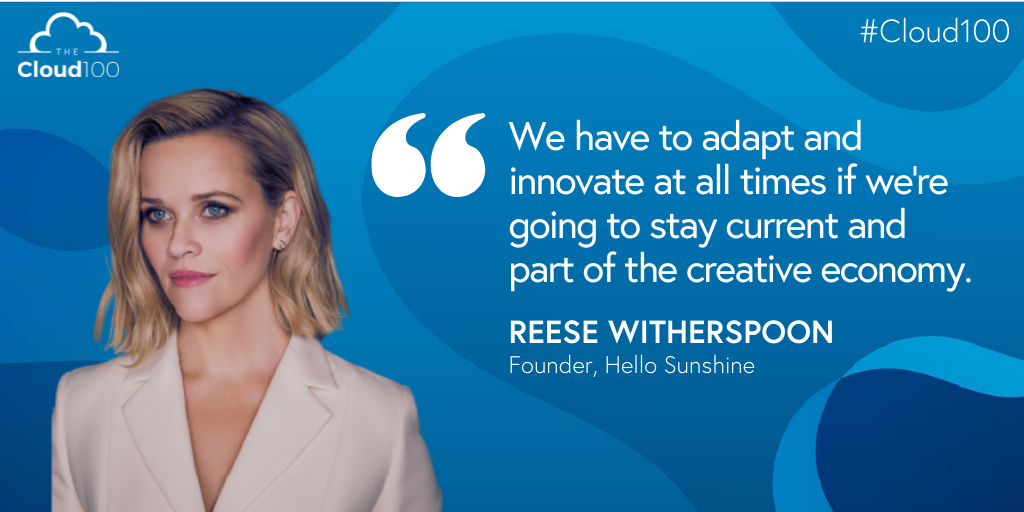
Watch the session!
Transcript
Reese Witherspoon: Hi, I’m Reese Witherspoon and I’m the founder of Hello Sunshine.
Rachel Carlson: Hi, I’m Rachel Carlson and I’m the CEO of Guild.
Chris Comparato: Hi, I am Chris Comparato and I am the CEO of Toast.
Rachel Carlson: All three of us spend time in big industries in the US that have really undergone an enormous amount of change over the course of the pandemic in the last almost year and a half now. So I’m curious as you think about the broader change, but more specifically change as leaders and how you figured out how to lead during this crazy period that we’ve all gone through. What are the leadership changes you’ve made or any leadership resolutions that have been impactful for you as you’ve navigated leading? And I’ll ask Chris to start.
Chris Comparato: Toast is a cloud-based end-to-end platform that powers the restaurant industry. So as a backdrop, the COVID pandemic had a pretty significant impact and it threw a punch into the restaurant community. And when the restaurant community started to feel pain, we felt pain. When your whole customer base is suffering, you feel that pain. If you go back to last March and April, it was pretty tough. And while you’re reading signals from different sources, you’ve got to make some calls. So for me, one of the biggest self-improvements is really about decision-making. And then on top of that, how do you communicate when you’re in a little bit of a crisis and you’re analyzing where to go next, how do you communicate to your team, how do you communicate to the customer base, and all of the key stakeholders?
So I think that’s one thing that jumps out at me is really decisiveness and resilience, and then also communication because it’s important to stay aligned and give people clarity. But it’s continuous improvement. So. I think I’m always looking to up my game and continuously improve and that part continues. Reese, how about you? The media industry, the media industry has gone through amazing transformation in the past year and a half. So when you look to your role as a leader, can you reflect on any changes that you had to make within your space and your industry?
Reese Witherspoon: Yeah, I think March, I want to say the 11th, we were in the middle of shooting The Morning Show in downtown Los Angeles and everything just came to an abrupt halt. I remember Jennifer Aniston calling me and saying, we have to shut this down. Do you see what’s going on in Italy? And within 24 hours, we were on the phone with the heads at Apple and just saying, we got to shut this show down. At Hello Sunshine, we had four shows in production that just immediately stopped. And it was very abrupt. We were all told we were going back in two weeks. It was not two weeks. And that’s hard. Once you’ve started production, it’s a speeding train forward where you lose so much money every single day. And I have to say that our corporate partners, our studio partners were incredible with the way they took care of our workers, really compensating them, making sure that they were still paid for as long as they could be. But I would echo what you said, Chris. It was a lot about learning to communicate with people. It was, wow, we all got on Zoom really fast and started connecting and reassuring. And not just those everyday scheduled meetings, but it was picking up the phone and calling people and going, how are you managing this because we’re now talking all day on screens and how are you handling that with your team. And mental health check-ins. Right? And Zoom-free Fridays became really important as the pandemic progressed. Come back in October, we were back to production again, and that was a great relief to us, but then we had to implement tons of COVID protocols. So it’s been a really hectic, crazy time, but I feel really optimistic that those skills that we learned during that time are really going to help us grow and feel even closer as a company. What about you, Rachel?
Rachel Carlson: For us at Guild, we are focused on up-skilling all of America’s workforce, but with a real focus on the frontline workforce. And the frontline really was undergoing, I think the most intense impacts of COVID. When you think about employees who work at a Walmart or a hospital or in a Chipotle and had to move to all app-based orders, you name it, those are our students. And so empathy became really the driving characteristic that we had to focus on at Guild because of course, we’re deeply empathetic to our students. And at times that felt at odds with some of the other stakeholders, we serve like our employers or our university partners who all come together to do this up-skilling. But really everyone was struggling because employers were trying to figure out how do we keep our people safe, but keep our stores open. And then universities had an incredibly difficult time during the pandemic, particularly the schools we work with that have both on-campus footprints and online. So empathy became the driving theme for Guild. And then for me, as a leader, it became wildly important. 54% of our students are women. 70% of Guild employees are women. This was a tough year for moms. And 56% of our students are students of color. And this was probably the most important, but the most difficult year of conversations, decisions around race. And for me, just trying to constantly find a way to connect and stay aware of what my team and my customers were going through, became my north star. And it was hard. And I’ve learned so much. I look back with a lot of gratitude for what I learned this year.
Reese Witherspoon: So, Chris, speaking of your business, so many brick and mortar locations of restaurants had to pivot to digital solutions. Where did Toast jump in and help with those solutions for restaurant owners?
Chris Comparato: Sure. So before jumping into, really, 2020, I think it’s important to zoom out and talk about the industry at large. And the restaurant industry is this amazing diverse industry that we all love and cherish so much, but it’s been underserved by technology firms and financial service firms for decades. It’s fallen behind other industries in modernizing around technology. When COVID hit, I’d argue that some of the products which used to be optional became indispensable and must-have. So if you think about the restaurant which typically served their dine-in population, and maybe they had delivery, or maybe they had takeout or online ordering, all of a sudden when COVID hits, people are not coming into the restaurant, obviously, and restaurants really had to pivot. And how do you drive those orders into the door? So whether it’s first-party delivery to get orders in on delivery, whether it’s curbside pickup and take out, whether it’s online ordering. So at Toast, we very much tried to expedite products that we already had in motion, but really turbocharge them and get them into the hands of restaurants so that restaurants could get orders in the door. And then once the restaurant had consumers and guests’ orders, how do you increase efficiency, because these restaurants were struggling when it comes to staffing and employment and safety protocols and compliance. So how do you enable that restaurant to really run efficiently and run a streamlined business and get those meals and orders out the door, whether it’s to frontline workers or to consumers?
And then lastly, how do you do all of this and still delight your guests and make sure that as an entrepreneur and as a creator and an artist, you’re still making these fantastic meals, but you’re delivering them through different channels. And how do you still make sure that you’ve got this edge on delighting your guests and creating a fantastic experience? So if the three of us were sitting on my patio, how do we enjoy a great meal, but we’re on my patio, or maybe we’re doing takeout and going to go in and do curbside pickup and sit at a park. But how do you make sure that you’re also delighting the guest? And I think a lot of this came front and center, I’d say, in the middle of 2020. And we had to expedite products that we had already been working on. Another good example is the ability to, when restaurants came back, for us to walk into a restaurant and order and pay at the table, but perhaps, not touching a menu, not touching a terminal, but the ability to have the health and safety of the consumer and the employee in mind. So products like order and pay at the table and scan-and-pay became really critical indispensable products for the restaurant industry.
But Reese, what about media? Media has gone through an amazing transformation. So maybe you can comment on some of that same transformation that’s happened within media.
Reese Witherspoon: Yeah. I mean, it’s been really interesting to watch audiences shift their viewing patterns. So watching that behavior change so rapidly, unfortunately, the decline of a movie-going definitely impacted my business greatly. We were primarily a streaming-based company that are scripted and unscripted pretty much lives on streaming. So, just doubling down on those strategies. And also thinking about, kind of trying to predict what the future will be, what do people want to see? I think it’s going to be really important as we emerge from this time that people are going to want to see hope and optimism, humor, comedies, things that lift you up. It was also really hard too because a lot of shows came out and they were very, very hard and dark. It was hard to watch. So I think a pivot there too, about what we’re making, not just how we’re making it but the content inside, how audiences are going to want to feel cheerful. And that’s something that we were really talking about a lot and incubating new ideas and finding new scripts during this kind of time of quiet.
Rachel Carlson: Reese, I’m really curious. Your career has spanned so many different industries and you’ve been quite entrepreneurial in a number of them between the work in media and Draper James and the Book Club. I’d love to hear, what inspires your entrepreneurship?
Reese Witherspoon: Well, I just have a billion ideas and I like to…Sometimes they’re terrible ideas and then sometimes they’re good ideas. But I’ve always been entrepreneurial ever since I was little. I always had some business I was running out of my desk in the third grade or doing something enterprising when I was seven or… So. I don’t know. I’ve always thought of myself as a problem solver. So when I see a very clear glaring problem, I’m always trying to figure out my way to fix it. And when I looked at Hollywood in general and media in general, I started to see that women as audiences were migrating to different platforms, but they weren’t really being spoken to on those platforms. Right? So my industry was pretty much focused on movie-going. And with the emergence of streaming, created this real white space and social media, I would say, where women were very early adopters. I think it created an opportunity to build a multimedia brand that could really bring entertainment to women where they were, whether it was on their phone, whether it was on the TV, whether it was on their computer screen, but instead of asking audiences and consumers to come to us, we were going to them. And that was why we were very consumer forward. And trying to just always keep on top of what women are looking at right now, and in the process doing it with authentic authorship across all marginalized voices. It isn’t just about women per se, but it’s about women of color, LGBTQ representation, differently-abled women. These stories have not been told for years and years, hundreds, thousands of years, because the creators couldn’t authentically tell those stories.
But we’re in a unique spot where the convergence of streaming and the secular tailwinds of me too, or time’s up or black lives matter, has really brought consciousness to audiences and companies alike. So I think, whereas I used to be talking in an echo chamber 10 years ago about these things, now studio heads are like, yes, bring us all that content. We need it. So it’s actually been a really encouraging time for a change in my industry. This kind of dovetails with what I was talking about. There have been major resets in so many industries. And I wonder how you have perceived that and been in front of all of this progress and how you kind of chart that with your business.
Rachel Carlson: So for Guild, we, in 2014, felt like the future of work was coming and the need to upskill America’s workforce was prescient in a way it hadn’t been for any other generation. Because if you think about it, the grandfather was maybe a member of an agricultural economy. The son, who was then in the industrial economy, saved money for college. College was quite affordable then. And the grandson moved into the knowledge economy. That’s how we used to make the change over generations. Now it’s the great-granddaughter and she’s going to have to re-skill herself every five years. She can’t wait for her children to enter the next economy or to learn the next skill because the half-life of a skill is no longer a generation in length, it’s four and a half years. And so what that means is for the average American they’re going to have to re-skill and up-skill themselves every five years. That doesn’t mean a four-year degree every five years, but it does mean three, six months, sometimes one to two years of learning a new technology or a new set of people leadership skills or elevating themselves into the next step of their career.
So we had a pretty deep conviction on that seven, eight years ago, but it took a long time to convince organizations to follow. So we had to find the more innovative companies and the more innovative universities to build this two-sided marketplace who were willing to take a risk. And some of those are companies and schools you’ve heard of like the Walmarts and Chipotles and the University of Arizona, but others are ones you’ve never heard of, that were just on the tip of the spear, where they had leaders. And it always comes down to leaders who see what’s needed the same way you mentioned knowing what women need from media. And I’m a happy, grateful customer of that from your behalf. So thank you for your book club and for Draper James and that type of innovation. I think it’s about understanding what the mass American public needs. And that’s something I like about the work that all of us do, none of us call Silicon Valley home, but we are doing innovative things that live in streaming, on the internet, but from what I would call mainstream American perspectives.
Reese Witherspoon: I love hearing that Rachel. It’s so interesting because I’ve never really thought about every skill that you have. Right? Because we all have skill stacking in our careers. But it’s so important to stay nimble and continue to learn, every four years, new skills. For us, it’s about all the new social media platforms. And it’s like, sometimes I’ll have a moment where I think, another platform and we have to learn it. And the answer’s yes, we do. We have to adapt and innovate at all times if we’re going to stay current and part of the creative economy. So I think that’s really interesting that you say that. But I’ve never heard anybody sort of talk about it as every industry needs that kind of constant updating and learning.
Chris Comparato: Yeah. One of the things I was going to mention is Rachel, I applaud you because you’re making it so accessible to everybody. And I guess a question for you is, how do you think remote learning long-term will have an impact on how we all learn? And can you comment on remote learning and sort of the virtual environment and what that’s going to look like long-term?
Rachel Carlson: Yeah. So I like to think about it from an entrepreneurial framework of what’s the job to be done. And y’all might’ve heard that theory before, but I think we sometimes forget school is a lot of things. So the job to be done for school looks very different depending on your age. The job to be done for kindergarten through sixth grade is often social, emotional learning. The job for middle and high school is often more social than books. Even though we talk about the SAT scores, you’re really becoming a human, you’re finding yourself through adolescence. The job to be done for 18 to 22-year-olds going to the classic college experience, that’s a coming of age experience, right, with the football games and the experience you might have on campus. But the job to be done for the average American learner, who today is a 32-year-old single mom, probably a woman of color, probably working a job between 14 and $20 an hour, she’s actually the new normal student. And what she needs is needs skills. She’s hiring a college or hiring a school for skills acquisition. And so she doesn’t care about the football games and she doesn’t care about the campus. And that doesn’t mean the campus isn’t important. It’s wildly important to that 18 to 22-year-old, but today only 27% of students have ever slept in a dorm. And that number is declining. And so when we talk about the other 73% of learners, they’re hiring college for something else. So that’s my take on remote learning is for those who are hiring school for the social, emotional coming of age experience, we need to preserve the classroom, the campus, et cetera. For those who are hiring it for skills acquisition, remote learning’s an awesome tool.
Reese Witherspoon: I could talk about that all day, Rachel, because my kids are applying for college. One daughter’s in college. Another one is applying to college and this crush in New York and Los Angeles and maybe other metropolitan areas, that this academic stress has on the children, I think is so misplaced because it’s so much about social, emotional learning that I value most in my employees. My most valuable employees are ones that have social, emotional intelligence. The ability to work well with others, are great team members, and pivot quickly, and find solutions. So when I see all this crush by the SATs and studying for the honors and the APs, and I think have we lost the importance of soft skills and social learning? So I do think that pivot within remote learning so that you get what you need out of it. Right? But to really nurture that artistic and social side of yourself is important. Anyway, I could talk about that all day.
Rachel Carlson: I love that. That’s a perfect pivot to the last question because the question I was going to ask is about waving a magic wand. If you could make one change in your industry. Because for me, it’s what you were just hitting on Reese. We call it durable skills. How do we turn the conversation away from skills that expire, which are often the ones computers can do as well? Right? The computer is going to be able to do great on the SATs, but what are the durable, soft power skills that we need all Americans to have so that we can have a nimble economy that can survive the next big pivot, which I hope isn’t a pandemic, but is some other industrial change we haven’t seen yet. So, that’s my wish. I’d love to hear Chris, what would be your magic wand you could wave for your industry?
Chris Comparato: Yeah. So as I mentioned, it’s an industry that’s been underserved. And if you are a minority entrepreneur or a black entrepreneur, and let’s say you want to start a restaurant, the odds are even more stacked against you. So if I were to wave a magic wand, I’d say, what can we do to help the artists, the entrepreneur who’s underrepresented? Maybe they can’t secure capital. Maybe they can’t secure the right technology tools to be successful. Maybe they can’t secure the right education and the skills training and the consulting around running a P and L and running a restaurant. So I think it’s important to focus on that because especially given the past year and a half, the impact to these communities and especially restaurant entrepreneurs who have been underprivileged, what can we do to change that? And I think we have an opportunity ahead of us to create systemic changes to help any entrepreneur, no matter what your background is to start a restaurant and run a great business. And I think that’s an important magic wand. And I think many people are leaning into it, whether it’s banks that are sponsoring entrepreneurs of color funds, we are leaning into it with pilot projects in Boston to help minority restaurants try to be successful. But I think we’re going to learn a lot. And back to this educational journey, I think we’re on an educational journey to help everybody be successful, especially when the odds are stacked against you. And I think that’s going to be an important piece of the puzzle moving forward. Reese, how about you? If you had a magic wand, what would you do with it?
Reese Witherspoon: You know what, it’s such a great question because I think a lot about it, and I’ve thought about this a lot about how artists get paid. And I think that is revolutionizing right now. Whether you look at the emergence of NFTs and the ability to have direct payment from the artist to the buyer and have this continued connection, that’s something really encouraging and I hope to see more of because growing up in this business, I’ve been in Hollywood and media for over 30 years. Oh God, I can’t believe I just said that. But what always gnaws at me is how artists are not directly paid for their work and have no ownership over their work. So as more work is done to connect the financial economy with artists, and we’re cutting out the middle distribution piece, I think we’re seeing more money and financial stability go to the actual creators. And I find that enormously encouraging. So if anything, I would love to wave a magic wand and make that happen even faster. Thank you so much for this great conversation. I really enjoyed this time. I could talk all day to you guys, but we’re going to wrap up now.
Chris Comparato: Thank you both. This was exciting. I think just within this time I learned a lot. Rachel, we should be partnering on education. And Reece, maybe there’s a way to partner within media. But I really enjoyed this.
Rachel Carlson: Reese, Chris, thanks so much for an awesome conversation. Excited to figure out how to partner more with both of you.
